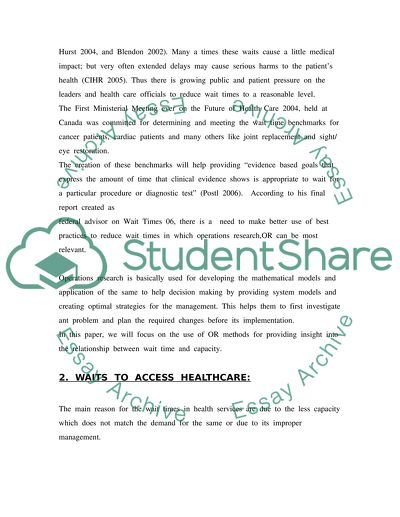Cite this document
(“Operations Research in Health Care Assignment Example | Topics and Well Written Essays - 2000 words”, n.d.)
Operations Research in Health Care Assignment Example | Topics and Well Written Essays - 2000 words. Retrieved from https://studentshare.org/health-sciences-medicine/1529926-operations-research-in-health-care
Operations Research in Health Care Assignment Example | Topics and Well Written Essays - 2000 words. Retrieved from https://studentshare.org/health-sciences-medicine/1529926-operations-research-in-health-care
(Operations Research in Health Care Assignment Example | Topics and Well Written Essays - 2000 Words)
Operations Research in Health Care Assignment Example | Topics and Well Written Essays - 2000 Words. https://studentshare.org/health-sciences-medicine/1529926-operations-research-in-health-care.
Operations Research in Health Care Assignment Example | Topics and Well Written Essays - 2000 Words. https://studentshare.org/health-sciences-medicine/1529926-operations-research-in-health-care.
“Operations Research in Health Care Assignment Example | Topics and Well Written Essays - 2000 Words”, n.d. https://studentshare.org/health-sciences-medicine/1529926-operations-research-in-health-care.


